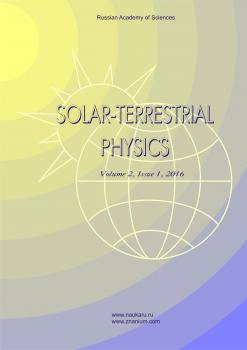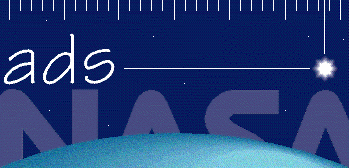Yakutsk, Russian Federation
Yakutsk, Yakutsk, Russian Federation
Yakutsk, Yakutsk, Russian Federation
Yakutsk, Yakutsk, Russian Federation
Yakutsk, Yakutsk, Russian Federation
The observable anisotropy of cosmic rays has first been decomposed into zonal harmonics and components of vector and tensor anisotropy. We examine Forbush decreases in cosmic rays that occurred in November 2001 and November 2004. It is shown that at the beginning of a Forbush decrease an antisunward convective current of cosmic rays predominates; and during the recovery phase, a sunward diffusive current of particles along the interplanetary magnetic field dominates. During the phase of intensity drop, short-time decreases in the second zonal harmonic take place. These decreases occur with abrupt changes of the interplanetary magnetic field intensity and solar wind speed. During the passage of large-scale solar wind disturbances, the tensor anisotropy behaves in a complicated way. To explain its behavior, a further detailed investigation is required.
cosmic rays, tensor anisotropy, Forbush decrease, coronal mass ejection
1. Abunina M., Abunin A., Belov A. Phase distribution of the first harmonic of the cosmic ray anisotropy during the initial phase of Forbush effects. J. Physics: Conference Ser. 2015, vol. 632, no. 012044.
2. Abunina M.A., Abunin A.A., Belov A.V. et al. Relationship between Forbush effect parameters and the heliolongitude of solar sources. Geomagnetism and Aeronomy. 2013, vol. 53, no. 1, pp. 10-18.
3. Altukhov A.M., Krymsky G.F., Kuzmin A.I. The method of “Global survey” for investigating cosmic ray modulation. Proc. 11th Int. Conf. on Cosmic Rays. 1970, vol. 4, pp. 457-460.
4. Belov A.V., Asipenka A., Dryn E.A., Eroshenko E.A. Kryakunova O.N., Oleneva V.A., Yanke V. Behavior of the cosmic-ray vector anisotropy before interplanetary shocks. Bull. RAS: Physics. 2009, vol. 73, no. 3, pp. 331-333.
5. Grigoryev V.G., Starodubtsev S.A., Krymsky G.F. Krivoshapkin P.A., Timofeev V.E., Prikhodko A.N., Karmodonov A.Ya. Modern Yakutsk spectrograph after A.I. Kuzmin. Proc. 32th Int. Conf. on Cosmic Rays. 2011, vol. 11, pp. 252-255. DOI:https://doi.org/10.7529/ICRC2011/V11/360.
6. Jian L., Russell C.T., Luhmann J.G., Skoug R.M. Properties of interplanetary coronal mass ejections at one AU during 1995-2004. Solar Phys. 2006, vol. 239, pp. 393-436. DOI:https://doi.org/10.1007/s11207-006-0133-2.
7. King J.H., Papitashvili N.E. Solar wind spatial scales in and comparisons of hourly Wind and ACE plasma and magnetic field data. J. Geophys. Res. 2005, vol. 110, A02104. DOI:https://doi.org/10.1029/2004JA010649.
8. Kravtsova M.V., Sdobnov V.E. Cosmic rays during great geomagnetic storms in cycle 23 of solar activity. Geomagnetism and Aeronomy. 2016, vol. 56, no 2, pp. 143-150.
9. Munakata K., Kuwabara T., Bieber J.W. et al. CME-geometry and cosmic-ray anisotropy observed by a prototype muon detector network. Adv. Space Res. 2006, vol. 36, pp. 2357-2362.
10. Zhang J., Richardson I.G., Webb D.F., Gopalswamy N., Huttunen E., Kasper J.C., Nitta N.V., Poomvises W., Thompson B.J., Wu C.-C., Yashiro S., Zhukov A.N. Solar and interplanetary sources of major geomagnetic storms (Dst≤-100 nT) during 1996-2005. J. Geophys. Res. 2007, vol. 112, A10102. DOI:https://doi.org/10.1029/2007JA012321.


















